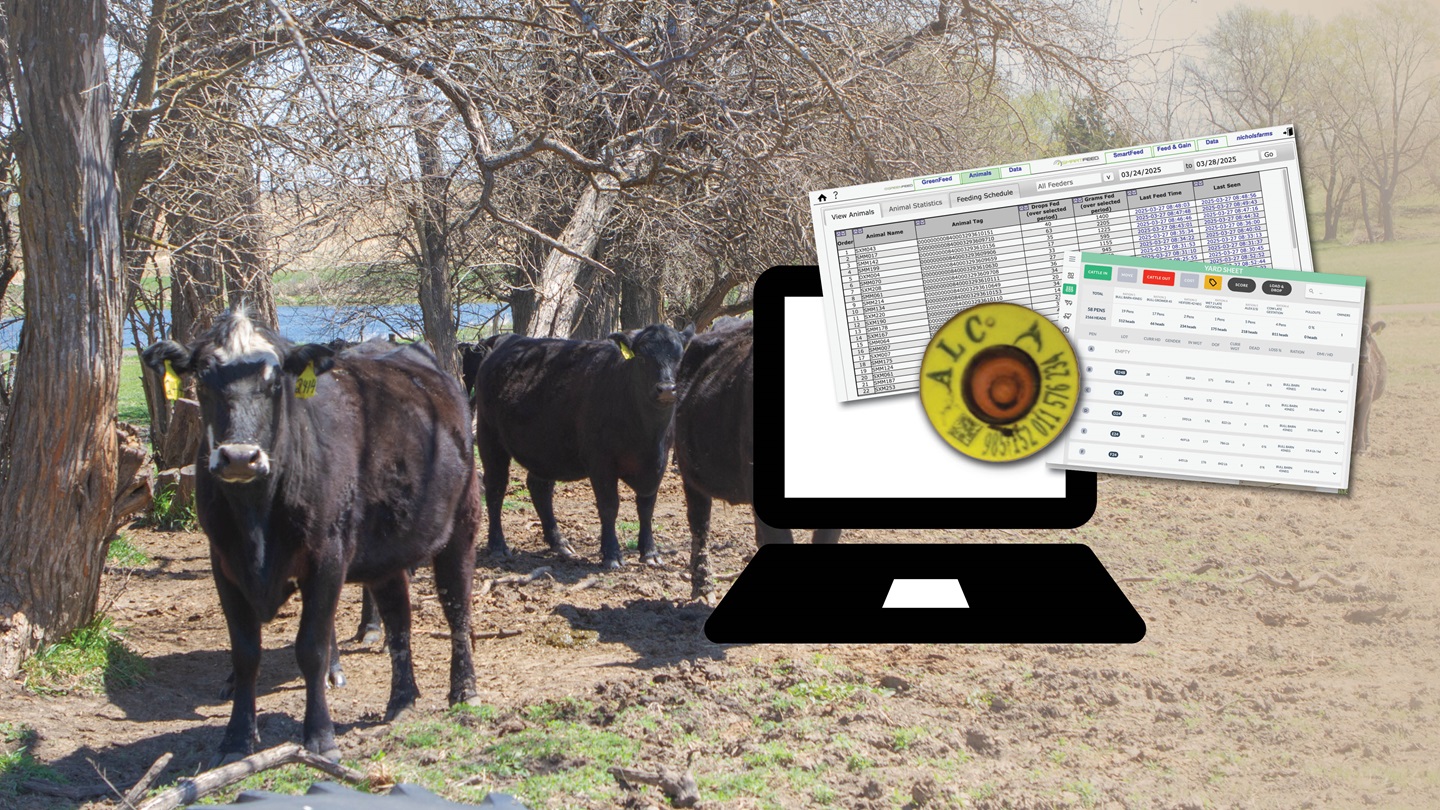Data Management is Beneficial to Cattle Producers
Cattle management digital software options, and how to get the most out of the data.
May 6, 2025

Digital recordkeeping programs monitor feed management, cattle health, pasture management and even detection of estrus. [Screenshot photos by Ross Havens.]
Many producers today realize the importance of digital recordkeeping and are discovering a wide range of options. Ross Havens, marketing coordinator at Nichols Farms in southwest Iowa, says this seedstock operation sells 500-600 Angus, Simmental, South Devon and composite bulls each year to commercial cattlemen.
“The Nichols family has always been very progressive, using the most current technologies,” Havens says. “We wrote our own database in the early 1980s to keep track of all our own information.”
They are still using that system, says Havens. “It’s a programmable database, so we can change it through the years as we move forward, using different technologies.”
Technology has boomed in the last few years, and Nichols Farms has utilized a good share of it.
Coordination with third parties has allowed the data to be utilized in industry efforts. For example, working with Iowa State University in the collection of indicators of carcass merit using ultrasound allowed development of expected progeny differences (EPDs) for carcass traits.
“Information is transferred back and forth digitally between the companies we work with and our database,” Havens explains. “We are also using some new technologies in our feed intake system and methane monitoring. All data is real-time and continually transferred to the database, so we can log in and look at it. We are also evolving this into a genetic evaluation to help us get more accurate information to use in genetic selection.”
The farm uses a lot of digital data and works with Merck’s SenseHub® program. Havens says the operation has been selecting for genetic resistance to bovine respiratory disease (BRD) for the past 10 years. The SenseHub tag system monitors the cattle for body temperature and movement in the pen. It identifies those who are sick. This digital, real-time information goes into their database. Users see it and make decisions with it.
SenseHub helps producers increase reproduction rates and maintain herd health. An additional estrous detection tool during breeding season can increase conception rates, monitor reproductive status of cows and identify replacement heifers that cycle reliably.
“The technology age is exciting, but you need the right people on board to help you with that information — people who understand it and are comfortable with it. As long as you are not afraid to learn, it’s a good thing!” describes Havens.
More producers are using the available technology, even though ranching has always been fairly traditional. While Havens is using the farm’s personal database to track phenotypes, birth weights, weaning weights, disposition scores and more, he says other options are available for commercial cattlemen, including CattleMax.
“On the feed side, there are all kinds of digital feed programs. The one we work with right now is Cattler. It’s a real-time feed program that helps us monitor the cattle feeding every day, which bunk they are fed in, making sure rations are mixed correctly. We just look at our phones and get all that information. It makes our business easier and better,” he says.
Cattler also provides records. Havens says it tracks their feed inventory, especially if they are buying outside ingredients like distillers’ byproducts. Hay inventories are up to date throughout the year, so the feedlot can manage its use without getting ahead or behind, and it tracks production costs. The more information you have, the better your decisions can be, he points out.
During the years, There have been several systems for heat detection to aid reproduction in cattle, explains Havens, but now they are becoming more defined. “SenseHub has a new tag to help producers monitor cows or heifers for movement, as well as estrus, for AI (artificial insemination) programs.”
According to Havens, other tag systems exist to monitor cattle regarding which pastures they are in. Virtual fence collars enable owners to manage where cattle are and where they are supposed to be.
“A person must be computer-oriented to do some of these things, but the younger generations have grown up with it. Some of the older folks are even tackling these new challenges. We deal with some ranches where the owners are in their 70s or 80s, but they put the right people in place in their operation, so they can utilize and take advantage of these programs,” says Havens.
Editor’s note: Heather Smith Thomas is a freelance writer and cattlewoman from Salmon, Idaho. [Lead photo by Leann Schleicher.]
Angus Beef Bulletin EXTRA, Vol. 17, No. 5-A
Topics: Business , Management , Record Keeping
Publication: Angus Beef Bulletin


